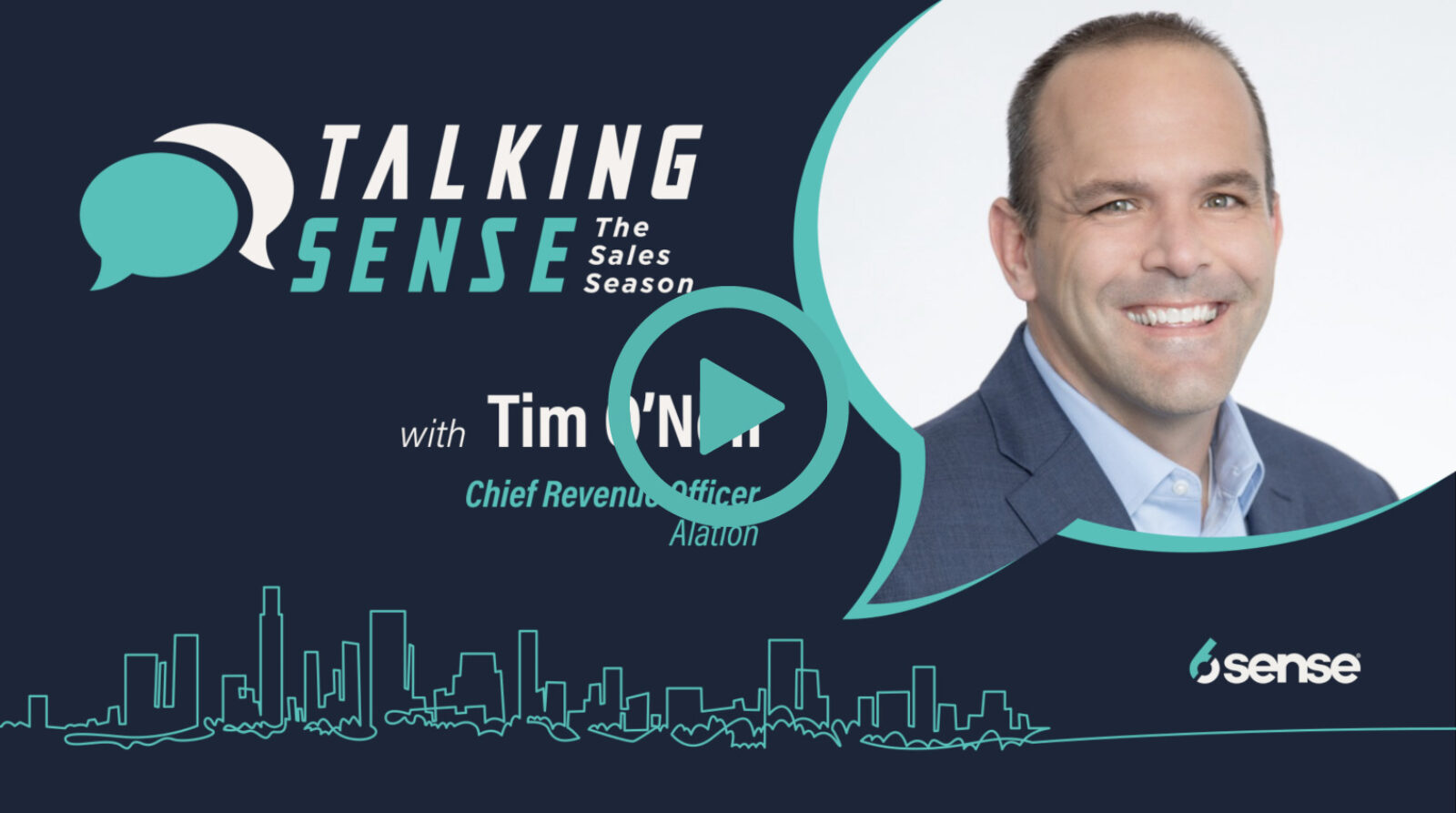This season of Talking Sense is all about bringing in top revenue officers to share how they lead their teams to win.
In this episode, 6sense CMO Latané Conant chats with Tim O’Neil, CRO of Alation, which just achieved Bessemer’s Centaur status for crossing $100 million in revenue. O’Neil also serves as Dean of the CRO school at Pavilion.
O’Neil discussed his best practices, including:
- Going from zero to nine-figures in sales
- Why he ditched weekly sales forecast calls, and
- How to coach sales reps into leadership
If you don’t have time to watch the full video, here are some highlights:
Changing the Cadence of Forecast Calls
O’Neil thinks weekly sales forecast calls are a waste of time.
Alation deals with large-scale, six-figure enterprise deals. Deals take an average of five months to close, which means that on a week-to-week basis, things don’t change enough to warrant a call.
So he ditched the weekly format for forecast calls. Instead, the Alation team alternates between pipeline meetings and forecast meetings. And marketing joins in on the pipeline call.
O’Neil suggests that within these meetings, teams should be asking questions like:
- How many leads does this rep have?
- How many reps are we hiring next quarter that we need to get pipeline for?
- What are our conversion rates on expansion?
- What are our conversion rates on new logos?
- What are our conversion rates per region?
- Where are we underserved?
- Where are we overserved?
Moving From Zero to $300 Million
Conant asked O’Neil about scaling a company. “You guys hit $50, you hit $150, now you’re looking to go to $300,” she said. “What’s the difference between $150 to $300 versus zero to $150?”
“Phase one is product market fit, phase two is scale, and phase three is cost of acquisition,” O’Neil explained.
That means in the first phase, everyone needs to get on board with their Total Addressable Market (TAM) and Ideal Customer Profile (ICP). In the second, you figure out how to simplify the message to hire the right reps to sell to that ICP. And in the third, your sales team gets really good at process and thinks long-term.
Training Up Sales Leadership
O’Neil shared a tip for spotting future sales leaders:
- Someone who doesn’t really want to be a leader will try to keep their territory to themselves until they get promoted
- Someone who is looking toward leadership will want to make sure there are a lot of other reps being hired for their territory so they have someone to lead
And he believes in planning ahead when it comes to leadership succession.
For a recent leadership training, he “flew in four or five individual contributors that weren’t in leadership yet just to get the view of what leadership looks like, to make sure they still wanted to opt into that discussion down the road and … so when it was time to do it, they understood it a little bit more,” O’Neil said.
Conclusion
O’Neil and Conant shared many more ideas about how building a strong sales engine powers company success. Listen to the full conversation.


